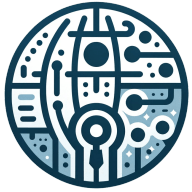3 Strategies to Ensure Employees Are Aware of their Benefits
Employee benefits are a crucial aspect of job satisfaction and retention, yet many workers remain unaware of the full range of perks available to them. This article explores effective strategies to ensure employees are well-informed about their benefits package. Drawing on insights from industry experts, these approaches aim to boost awareness and utilization of company-provided benefits, ultimately leading to a more engaged and satisfied workforce.
- Spotlight Benefits in Monthly Team Syncs
- Personalize Benefits Through Quarterly Checkpoints
- Host Casual In-Person Benefits Check-Ins
Spotlight Benefits in Monthly Team Syncs
At Spectup, we keep things straightforward—because no one has the time or patience to dig through a 30-page HR document just to figure out how to book a wellness day. What's worked best for us is actually something quite simple: regular, informal check-ins. During our monthly team syncs, we carve out a few minutes to spotlight one specific benefit—nothing overwhelming, just one. Whether it's the mental health allowance, co-working space stipends, or access to our investor network for personal side projects, we break it down in plain terms and give real examples of how someone on the team used it.
I remember one team member wasn't even aware they could expense strategy books that help with personal development. After a casual mention in a call, they started diving into founder psychology material that ended up helping a client presentation they were leading. It's little nudges like that which make the difference. Benefits shouldn't be a mystery—they should feel like a natural extension of working here. So, we focus on integrating them into conversations instead of just listing them in onboarding docs that gather digital dust.

Personalize Benefits Through Quarterly Checkpoints
Transparency and personalization have been game-changers for us. We've found that simply offering great benefits isn't enough if team members don't understand or utilize them.
Our most effective strategy has been implementing quarterly "Benefits Checkpoints" - personalized one-on-one sessions between team members and our People Ops team. These focused conversations help employees optimize their specific benefits package based on their current life situation.
When we first launched this approach, we discovered many team members weren't taking advantage of our 401(k) match program - essentially leaving money on the table. After implementing these checkpoints, participation jumped by nearly 40%.
I've learned that benefits utilization directly correlates with how we communicate their value. In the 3PL industry, our teams are often distributed across different locations and roles - from tech developers to logistics specialists - each with unique needs. Cookie-cutter approaches don't work.
We also maintain a digital benefits dashboard that tracks utilization rates and sends smart reminders about unused benefits. For example, if someone hasn't used their professional development stipend by Q3, they'll receive personalized suggestions based on their career path.
The ROI has been substantial. We've seen improved retention rates, especially among our warehouse operations team, and higher engagement scores across departments. In our industry, where finding and keeping talented people is increasingly competitive, making sure everyone maximizes their benefits package isn't just nice-to-have - it's a strategic advantage.
Host Casual In-Person Benefits Check-Ins
One thing we've found to be super effective at Kitsap Home Pro is holding casual, in-person team check-ins. During these meetings, I walk everyone through their benefits and answer questions right on the spot. This approach ensures that no one gets lost in the fine print or overlooks something important. These open conversations not only make sure folks know what's available to them but also show that we genuinely care about their well-being, not just their work.
When someone realizes a benefit—like extra paid time off or a professional development allowance—can actually make their life easier or help them grow, they're much more likely to use it!



